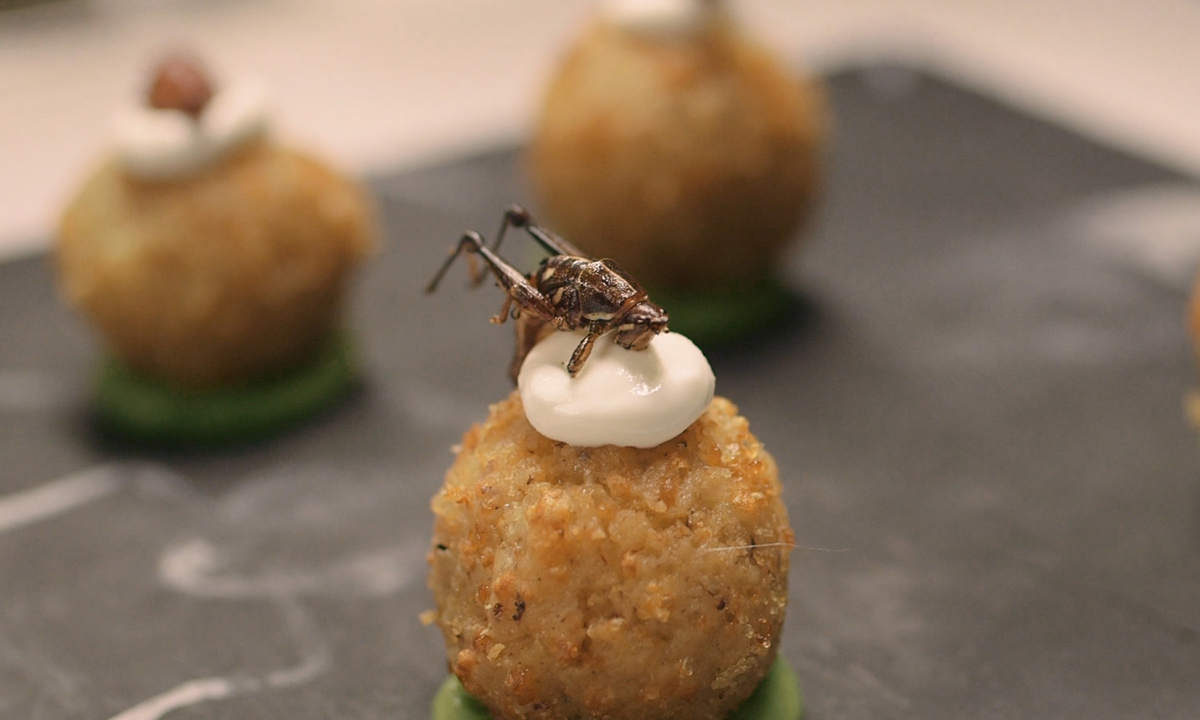What inspired you to tell this story? How do you find out about this bug/food revolution?
Johanna: Over brunch an old friend (main character of The Gateway Bug) and marine biologist, Tyler Isaac, was describing his Masters research at UCSB on the food drought set to hit humanity in the next 50 years and Earth’s overfishing problems. Rather terrifyingly, animal agriculture is now responsible for 80% of fresh water use, 91% of Amazon destruction, and 18% of greenhouse gas emissions (projected to increase 80% by 2050). We’ve wiped out 90% of the ocean’s top predators and at current fishing rates all the world’s fisheries will have collapsed by 2048.
In that same time Earth’s population is predicted to reach 9 billion. In 2013 the UN cautioned that food must thus increase 70% by 2050 but warn that’s impossible with our current unsustainable practices. Nevertheless 4 years later we still harvest wild fish to feed the farmed fish that are supposed to reduce our reliance on wild fish, components in dog food, our food and so on which is just illogical. Tyler’s research aimed to replace currently unsustainable feed systems with insects.
Insects release far less ammonia and methane than pigs and cattle, take up a lot less space and water, and pound for pound provide a lot more protein fibre, iron, calcium and essential amino acids. His investigations also echoed the now infamous UN report that suggested an effective strategy for feeding humanity in the future could lie in entomophagy (the technical term for eating insects), and by the end of brunch we realized we had to make a doc about this fascinating topic.
Cameron: After that first brunch meeting where we learned all about the effects of our current agricultural practices on the environment, we were totally enamored by the idea that a) insects are a possible solution and b) not that many people know much about it.
Did you come across any anti-bug movements?
Johanna: No not really, the real deterrent for Westerners and entomophagy is the ‘yuck factor’ and ingrained cultural taboos around eating insects. Some vegans aren’t that keen on eating animals obviously, but once they understand that ultimately our goal is to reduce meat consumption overall, they tend to be more understanding of the movement.
Cameron: There were a few people on Facebook and Instagram who commented on photos, events and links we posted and they had an anti-meat sentiment. We didn’t bother responding to them, as we think everyone is entitled to their opinions, but by discussing insects as a food option, we’re ultimately considering eating less meat.
What was it like being close to the roller coaster events for Kevin from Big Cricket Farms?
Johanna: It was intense! We don’t want to give away too much but obviously you become friends with the people whose lives you’re documenting and to see anyone go through what he did is rough. It was also terrifying at the world premiere to watch him in the audience watch his own story unravel before his eyes and we were concerned about whether he felt comfortable with seeing everything up on the big screen but after the screening he came up and told us it was really cathartic to watch and now having come out the other side, special to have that period of his life documented.
Cameron: The BCF/Youngstown story is a hard one to stomach, but as Johanna mentioned, we won’t reveal too much in this interview. I’m grateful to have had the opportunity to document what I consider a microcosm of what’s happening in communities all over the US – many people are facing the consequences of dying industries and environmental degradation, so it was a unique insight into something I may not have witnessed at home in New York.
Where do you see the bug / food innovation in 10 years time?
Johanna: I see food innovation as hitting a real turning point in the next 10 years. As our film establishes, change is inevitable and urgent, from global warming to the obesity epidemic and food wars, our current agricultural system is completely unsustainable. Just like climate change has become a problem now being addressed on a global scale, so too will our food system, and the sooner we address it, the less damage to recover from.
Cameron: Specifically for bug products, I think we’ll see more of the typical food products we eat (bread, pasta, “burgers”, tofu, “chicken” nuggets, etc) integrate insects as additional protein. Take a look at C-Fu Foods, they’re making cricket bolognese sauce in which you can’t tell the beef is actually cricket protein.
Johanna: There’s also a packet pasta product by a company called Bugsolutely that we cook up in the film that can be used just like regular packet pasta and closer to home an Aussie company called Grilo protein up in Byron are making protein bars using Entomo Farms products (another star in our film). The great thing about Grilo is that they see the sustainable manufacture and production of these edible insect consumer products as a holistic project and are simultaneously developing biodegradable packaging to really round out the sustainable side to their company.
What challenges did you come across in filming?
Johanna: Indie filmmaking comes with a special set of challenges from low budgets to reduced access to resources and staffing, but necessity really is the mother of invention and I don’t think we would have created the same film with a bigger budget so we’re pretty happy with the strategies we developed to combat these challenges. From the extra effort expended sourcing primarily public domain archival to entrusting important crew roles to young, emerging filmmakers, I feel like our learning curve was steep but rewarding.
Cameron: I’d say the greatest challenge was our low budget. We were shooting in between other film jobs, using our own equipment, traveling very long distances and staying in awful hotels or friends couches. If we were funded from the get go, we wouldn’t have faced problems like our small cameras overheating in the Austin Texas heat for example.
Johanna – you moved from Australia to New York – as a filmmaker, what differences have you noticed in the industry in the two countries?
Johanna: I actually wasn’t a filmmaker in Australia – I have a design background and was an exhibition designer at the National Gallery of Victoria in Australia for 6 years before moving to the USA to follow my passion to become a filmmaker. I transitioned into the art dept on indie film sets upon landing and became a Production Designer after my first feature as Set Decorator (I have a Masters in Interior Design), so had a pretty steep learning curve on set. Trial by fire if you will! Adjusting from Melbourne to NYC had peaks and troughs as any expat can tell you but America is a truly exceptional place to be a filmmaker, there are just so many talented people out here and so many productions going on at any given point in time that I’ve encountered countless generous souls and inspiring spirits who keep the indie film industry running on pretty much the smell of an oily rag. The low wages in America are challenging but do allow more work to occur as the result is lower budgets for films (and raising capital for production is pretty challenging!), so there’s a give and take that negotiated carefully can be a great thing. I’ve certainly both benefited and totally suffered because of it!
What are you both working on next – are you going to be sticking with environmental films?
Johanna: We’ve got a few films in pre-production currently, one is environmentally focused, one more NYC focused, a couple of narrative features in development and even a TV show so keeping pretty busy! We’re very keen to continue spreading the message from The Gateway Bug so looking into collaborations with educational institutions to develop stronger engagement with students and communities to create awareness around diet and food infrastructure and how people can get involved in very personal ways to help improve their local environment and diets.
Interested in more on The Gateway Bug? Check out the film’s Facebook, Twitter and Instagram.
D

